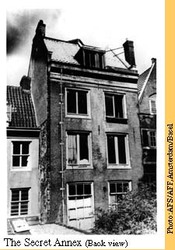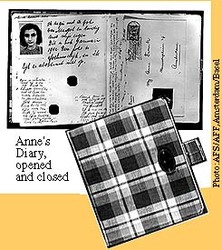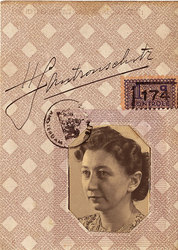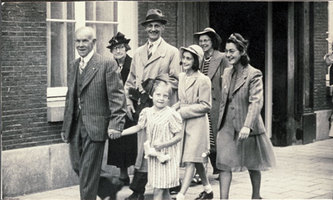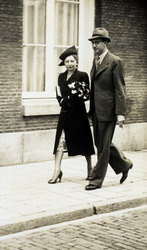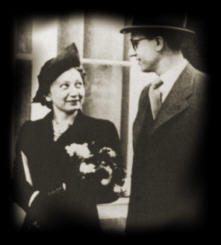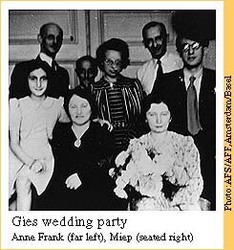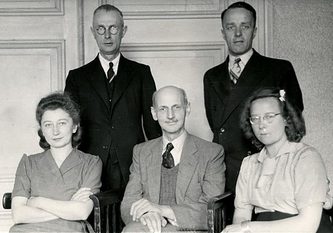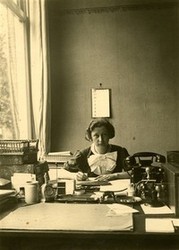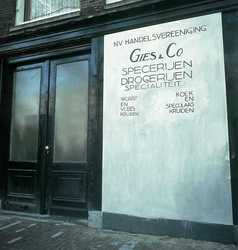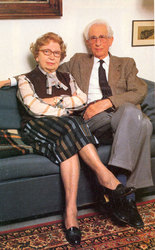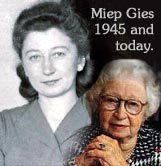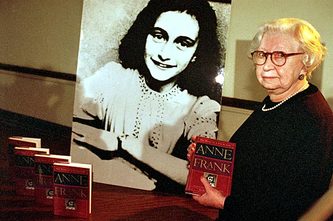Kish Mahoney Holocaust Literature
I have chosen Miep Gies as my rescuer to profile. I opted for her as my choice of rescuers because I found her story moving and heroic. Her (and her husbands) reasoning for helping not only the Frank family but also other families in need during WWII and the Hitler era was both unselfish and courageous. She chose to help simply because she could and because of her love for mankind. She like Irene Opdyke and many other rescuers displayed empathy, risk taking, sympathy, righteousness, an unselfish concern for the welfare of others, and the list goes on and on.
Meip Gies died on January 11th, 2010 at the age of 100. Gies who is best known for her role in hiding the Frank family (from the Nazis during WWII), including Anne Frank the original author of “The Diaries of Anne Frank.” Miep Gies life story is nothing short of heroic and inspiring. “I stand at the end of the long, long line of good Dutch people who did what I did or more- much more- during those dark and terrible times years ago, but always like yesterday in the hearts of those of us who bear witness. Never a day goes by that I do not think of what happened then,” stated Miep Gies on her website and in her autobiography.
Born as Hermine Santroushitz at the age of 11 she was forced to leave her family due to economic reasons. As a relief effort to help malnourished children in Austria, she too became a refugee, and was sent to Holland where she was welcomed into the home of a Dutch family whom she grew to love. It was her host family that gave her the name Miep, as they felt that Hermine was too formal, according to the Teachers Scholastic. Eventually, her birth-mother agreed that her daughter should stay with the Dutch family, as reported in The Economist. Gies relocated to Amsterdam with her adopted family in 1922.
It was in Amsterdam that Miep applied for an office assistant position at the spice company owned by Otto Frank. Meip, now in her early twenties become close friends with Otto, his wife Edith, and their daughters, Margot and Anne. When attempting to renew her Austrian passport in 1938, Miep discovered that her passport was no longer valid. She replaced her Austrian passport with a fabricated German passport, according to the teachers scholastic. After the Germans invaded Holland in 1940 Meip was summoned by the German Consulate due to her invalid passport and informed she would have to return to Austria. On July 16, 1941, to prevent deportation back to Austria Miep Santrouschitz marries her boyfriend, Jan Gies, thus becoming a Dutch citizen.
The Economist reports, Otto Frank turned to Miep in 1941 with the question: “Are you willing to take on the responsibility of taking care of us if and when we are in hiding?” Her response: “Of course.” The treatment of Jews continued to worsen in Holland, and in 1942 Otto Frank decided it was time for his family to go into hiding. The Teachers Scholastic reports, "Miep immediately offered her help despite the severe consequences if she was caught helping the Jewish family." For two year Gies supplied food rations, news from the outside, and friendship to the 8 Jews she hid in the “Secret Annex” of the spice factory which she worked. The Economist reports, “Every weekday morning she would climb two flights of stairs to the Annex and get a grocery list, then every afternoon she would deliver the shopping and stay a while to chat with her friends in hiding.”
Years later (1998) Miep Gies was interviewed by Menno Metselar at which time she stated, “It seemed perfectly natural to me, I could help these people. They were powerless, they didn’t know where to turn. I always emphasized that we were not heroes. We did our duty as human beings: helping people in need.” Miep recounts that she was not alone in helping the Otto family and four of their friends that hid within the secret annex. It was a group effort to hide, feed, and protect the Jews by Miep and Jan Gies along with three of her colleagues. According to the Economist, “Gies helped other Jews, taking in children and the cats of neighbors who were rounded up by the Nazis”. Just as Opdyke smuggled food into the Jewish Ghettos, Gies did the same for her Jewish friends that were hiding in the secret annex. Both women displayed the characteristics of selflessness, risk taking, and the unselfish concern for the welfare of others as they helped those in need.
On August 4, 1944 the spice company was raided by the German and Dutch police due to a tip from within the company. Miep was questioned on her involvement but escaped arrest as the questioning officer was from Austria and felt a connection to her, according to the Teachers Scholastic. Despite attempts by Miep to bribe the Austrian Nazi with money, she was unsuccessful in obtaining her friends release, according to reports in the Teachers Scholastic. This is yet another example of the risk taking nature of the rescuers and parallels the measures taken by Raoul Wallenberg when he risked his safety and ultimately lost his life for issuing false protective passports to thousands of Jews.
The Teachers Scholastic noted, that following the raid of the annex Miep ran to the attic recovering the diaries of Anne Frank as well as papers and family photographs, which she collected and hid in hopes to return them to their rightful owners when they were freed. In 1945 Otto Frank returned to Amsterdam, the sole survivor of the secret annex, and again Gies takes him into her home. According to the Wikipedia, once the war was over and the death of Anne Frank was confirmed Miep turned the diaries over to Otto. Meip stated in an interview with Menno Metselaar, “I did not read Anne’s diaries before turning them over to her father, if I had I would have had to burn them because some of the information in them was dangerous (naming five of the helpers and black market suppliers whom helped the Jewish families during their 25 months in hiding).” This is similar to the way that Irene Opdyke had promised to not endanger the lives of Dr. David and Miriam if or when she was captured and questioned. Despite the danger in being found out Dr. David and Miriam were empathetic to Opdyke and risked their own lives to help save hers.
“Gies post-war life was devoted to housewifery, motherhood, and preserving the memory of Anne and her family for future generations,” according to the Economist. For months Miep resisted reading the diaries that were written by her deceased friend Anne Frank, but the Economist reports that her heart was eased when she did finally read them. She then made it an annual ritual on August 4th to draw the curtains, unplug the phone, and mourn her lost friends. Miep was quoted in the Economist as often stating, “I honestly believe that we could not have done anything more to help the Franks.”
References:
http://www.economist.com/obiturary/displaystory.cfm?story_id=15391126
http://teacher.scholastic.com/frank/saving.htm
http://en.wikipedia.org/wiki/Meip_Gies
http://www.annefrank.org/content.asp?pid=242&lid=2 (This contains the interview with Menno Metselaar)
http://www.miepgies.com
Meip Gies died on January 11th, 2010 at the age of 100. Gies who is best known for her role in hiding the Frank family (from the Nazis during WWII), including Anne Frank the original author of “The Diaries of Anne Frank.” Miep Gies life story is nothing short of heroic and inspiring. “I stand at the end of the long, long line of good Dutch people who did what I did or more- much more- during those dark and terrible times years ago, but always like yesterday in the hearts of those of us who bear witness. Never a day goes by that I do not think of what happened then,” stated Miep Gies on her website and in her autobiography.
Born as Hermine Santroushitz at the age of 11 she was forced to leave her family due to economic reasons. As a relief effort to help malnourished children in Austria, she too became a refugee, and was sent to Holland where she was welcomed into the home of a Dutch family whom she grew to love. It was her host family that gave her the name Miep, as they felt that Hermine was too formal, according to the Teachers Scholastic. Eventually, her birth-mother agreed that her daughter should stay with the Dutch family, as reported in The Economist. Gies relocated to Amsterdam with her adopted family in 1922.
It was in Amsterdam that Miep applied for an office assistant position at the spice company owned by Otto Frank. Meip, now in her early twenties become close friends with Otto, his wife Edith, and their daughters, Margot and Anne. When attempting to renew her Austrian passport in 1938, Miep discovered that her passport was no longer valid. She replaced her Austrian passport with a fabricated German passport, according to the teachers scholastic. After the Germans invaded Holland in 1940 Meip was summoned by the German Consulate due to her invalid passport and informed she would have to return to Austria. On July 16, 1941, to prevent deportation back to Austria Miep Santrouschitz marries her boyfriend, Jan Gies, thus becoming a Dutch citizen.
The Economist reports, Otto Frank turned to Miep in 1941 with the question: “Are you willing to take on the responsibility of taking care of us if and when we are in hiding?” Her response: “Of course.” The treatment of Jews continued to worsen in Holland, and in 1942 Otto Frank decided it was time for his family to go into hiding. The Teachers Scholastic reports, "Miep immediately offered her help despite the severe consequences if she was caught helping the Jewish family." For two year Gies supplied food rations, news from the outside, and friendship to the 8 Jews she hid in the “Secret Annex” of the spice factory which she worked. The Economist reports, “Every weekday morning she would climb two flights of stairs to the Annex and get a grocery list, then every afternoon she would deliver the shopping and stay a while to chat with her friends in hiding.”
Years later (1998) Miep Gies was interviewed by Menno Metselar at which time she stated, “It seemed perfectly natural to me, I could help these people. They were powerless, they didn’t know where to turn. I always emphasized that we were not heroes. We did our duty as human beings: helping people in need.” Miep recounts that she was not alone in helping the Otto family and four of their friends that hid within the secret annex. It was a group effort to hide, feed, and protect the Jews by Miep and Jan Gies along with three of her colleagues. According to the Economist, “Gies helped other Jews, taking in children and the cats of neighbors who were rounded up by the Nazis”. Just as Opdyke smuggled food into the Jewish Ghettos, Gies did the same for her Jewish friends that were hiding in the secret annex. Both women displayed the characteristics of selflessness, risk taking, and the unselfish concern for the welfare of others as they helped those in need.
On August 4, 1944 the spice company was raided by the German and Dutch police due to a tip from within the company. Miep was questioned on her involvement but escaped arrest as the questioning officer was from Austria and felt a connection to her, according to the Teachers Scholastic. Despite attempts by Miep to bribe the Austrian Nazi with money, she was unsuccessful in obtaining her friends release, according to reports in the Teachers Scholastic. This is yet another example of the risk taking nature of the rescuers and parallels the measures taken by Raoul Wallenberg when he risked his safety and ultimately lost his life for issuing false protective passports to thousands of Jews.
The Teachers Scholastic noted, that following the raid of the annex Miep ran to the attic recovering the diaries of Anne Frank as well as papers and family photographs, which she collected and hid in hopes to return them to their rightful owners when they were freed. In 1945 Otto Frank returned to Amsterdam, the sole survivor of the secret annex, and again Gies takes him into her home. According to the Wikipedia, once the war was over and the death of Anne Frank was confirmed Miep turned the diaries over to Otto. Meip stated in an interview with Menno Metselaar, “I did not read Anne’s diaries before turning them over to her father, if I had I would have had to burn them because some of the information in them was dangerous (naming five of the helpers and black market suppliers whom helped the Jewish families during their 25 months in hiding).” This is similar to the way that Irene Opdyke had promised to not endanger the lives of Dr. David and Miriam if or when she was captured and questioned. Despite the danger in being found out Dr. David and Miriam were empathetic to Opdyke and risked their own lives to help save hers.
“Gies post-war life was devoted to housewifery, motherhood, and preserving the memory of Anne and her family for future generations,” according to the Economist. For months Miep resisted reading the diaries that were written by her deceased friend Anne Frank, but the Economist reports that her heart was eased when she did finally read them. She then made it an annual ritual on August 4th to draw the curtains, unplug the phone, and mourn her lost friends. Miep was quoted in the Economist as often stating, “I honestly believe that we could not have done anything more to help the Franks.”
References:
http://www.economist.com/obiturary/displaystory.cfm?story_id=15391126
http://teacher.scholastic.com/frank/saving.htm
http://en.wikipedia.org/wiki/Meip_Gies
http://www.annefrank.org/content.asp?pid=242&lid=2 (This contains the interview with Menno Metselaar)
http://www.miepgies.com
